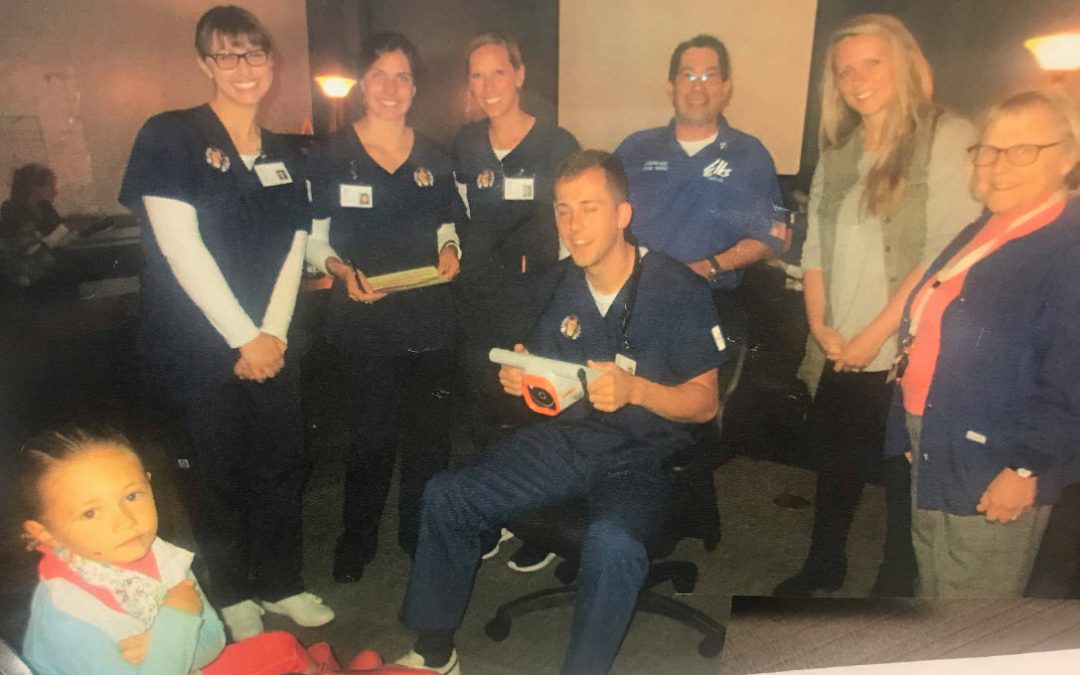Children use all their senses to learn. Playing with puzzles, using crayons, catching balls, and building with blocks can all improve their visual skills. These skills contribute to a child’s school readiness, and an uncorrected vision problem can act as a barrier to this readiness.
Vision screening is one important step toward early detection of possible vision problems in children. Early detection also can lead to intervention (like glasses or other non-invasive treatments) and restore proper vision. For this reason, Klamath Family Head Start completes vision screenings for each child annually.
How The Children’s Eye Clinic Works
We are fortunate to work with the Elks Casey Eye Institute in Portland. This is part of a collaboration between Oregon Head Start programs and the Casey Eye Institute, where they travel to Head Start sites and perform vision screenings with their handheld PlusOptix machine.
This machine takes a picture of the child’s eyes and is able to detect common eye issues that can often be reversed when a child is diagnosed before the age of five.
This type of screening is called “instrument-based screening,” and can detect refractive errors that may cause problems with focusing, or misalignment issues (also known as “lazy eye”). Compared to screening that requires children to name letters, shapes or symbols on a chart, instrument-based screening is fast and requires much less help from the child.
Why Screen for Vision at Head Start?
Parents and staff can’t always tell when a child has trouble seeing, and observation alone sometimes isn’t enough. This is why implementing evidence-based vision screening throughout early childhood is important.
If a parent wishes to provide additional screening at home, here are some signs to look for:
- frequent eye rubbing
- extreme light sensitivity
- trouble focusing
- abnormal alignment or movement of the eyes (after 6 months of age)
- chronic eye redness
- chronic tearing
It is important to remember that screening only provides a vision assessment at one moment in time. Occasionally, a parent or Head Start staff member will identify a new or different vision concern after a child has been previously screened. It’s also important to remember that as children grow their eyes change. New signs of an eye problem or blurred vision can arise as they mature, which is why we screen each student each year, regardless of their previous results.
What Comes Next?
Based on the screening results from a children’s eye clinic, a referral for additional care or a full eye exam may be recommended. If this is the case, we assist our families in making sure they have the educational materials and support they need to get further care for their child. Screening, treatment, follow up, and family support are all important parts of a child’s health experience with Klamath Family Head Start.

